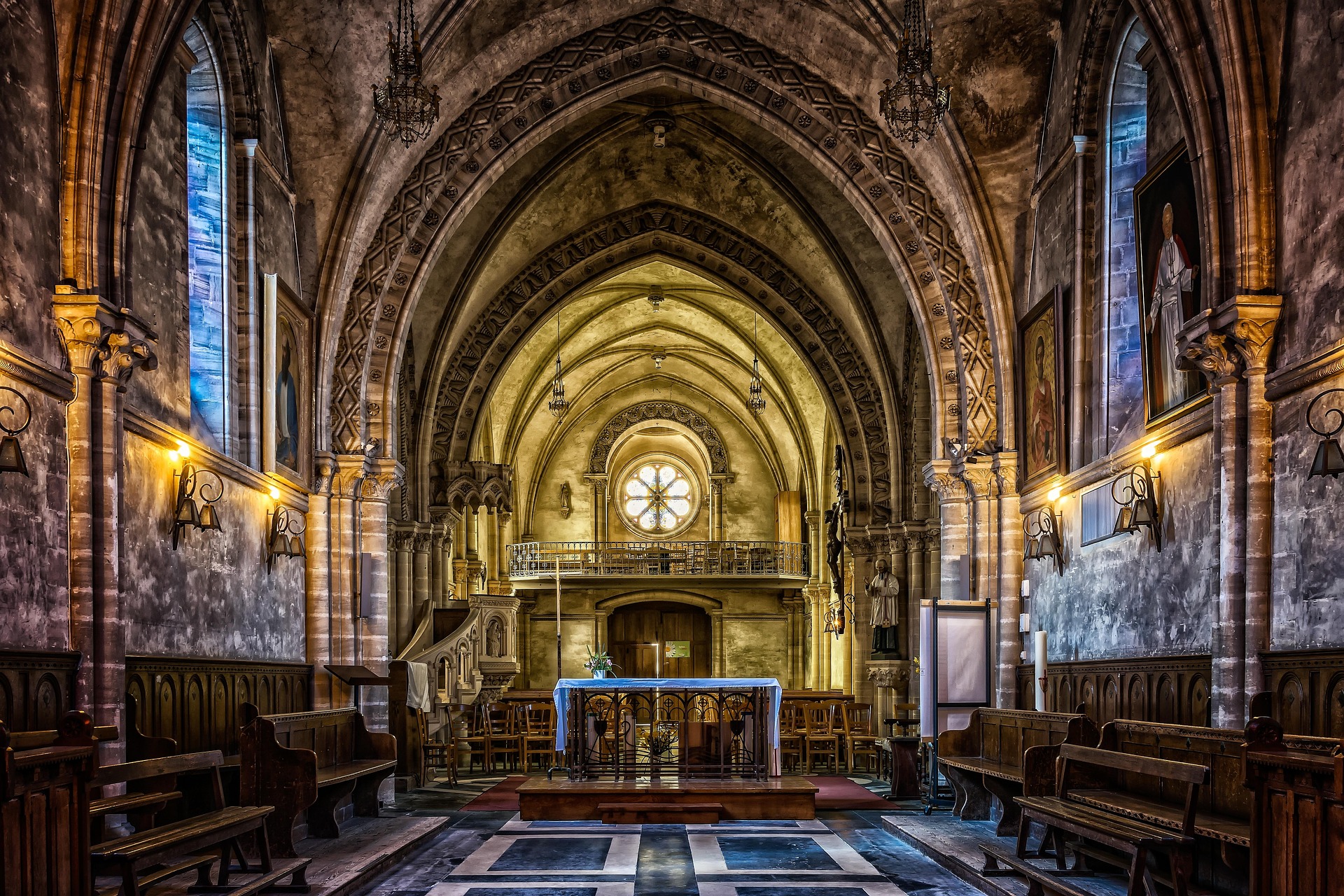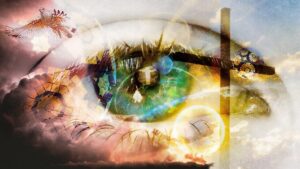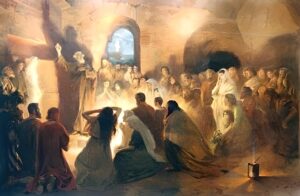Myths are often dismissed as fictional or fanciful. In Catholicism, however, the word myth carries a far deeper connotation: it signifies the living drama of God’s redemptive work in history. The Church stands at the heart of this ongoing narrative, enfleshing the divine plan in sacraments, devotions, and sacred tradition.
Our earlier discussion, Why ‘Mythic’ Matters, showed how mythic elements convey truth. Here, we explore how the Church embodies this mythic dimension—how every liturgical action, biblical story, and sacramental sign helps us participate in God’s grand narrative.
The Church does not merely tell myths; it lives them. From Scripture’s archetypes to the real presence of Christ in the liturgy, Catholicism’s symbols, rituals, and narratives illuminate the path of salvation, galvanizing both spiritual devotion and cultural identity.
Table of Contents
The Mythic Foundation: Biblical and Patristic Roots
Scripture as Sacred Drama
Catholics reverence the Bible not as a static compilation of doctrines but as a divinely inspired story. This sacred drama stretches from creation in Genesis to the new creation unveiled in the Book of Revelation.
- Old Testament Prefigurations: Many Church Fathers read Adam as the foreshadowing of Christ, and Israel itself as a type of the Bride of God—images that highlight a cosmic love story destined to be fulfilled in Christ and His Church.
- Cosmic Drama in the Gospels and Apocalypse: The Gospels present Christ as the Logos who overturns the power of sin and death, while the Apocalypse (Revelation) depicts the final victory of the Lamb. Thus, Scripture lays out a panoramic vision: creation, fall, redemption, restoration—the essential stages of God’s mythic plan.
Early Church Fathers on Myth and Mystery
- St. Augustine emphasized that the events in Scripture hold multiple layers of meaning: literal, moral, allegorical, and an elevated, mystical sense. What appears as simple historical narrative also carries lessons about humanity’s spiritual journey.
- Origen taught that every historical event in Scripture points beyond itself to divine truths. This spiritual lens amplifies the “mythic” dimension—revealing Christ at the center of all biblical narratives.
- St. Irenaeus introduced the concept of recapitulation, describing how Christ retraces the steps of fallen humanity to heal them. This teaching portrays salvation history as a grand narrative: everything begun in Adam is restored in Jesus.
The Sacraments as Mythic Enactments
Catholic sacraments function as ritual gateways through which the faithful enter Christ’s story in a tangible way.
- Baptism plunges us into Christ’s death and Resurrection—a new creation, echoing the primordial waters in Genesis.
- Eucharist completes the sacrificial archetypes of the Old Testament (e.g., the Passover Lamb), inviting us to the eternal wedding banquet of heaven.
- Holy Orders and Marriage immerse participants in archetypal roles. Priests image Christ the High Priest (Alter Christus), while spouses become living icons of Christ and His Bride, the Church.
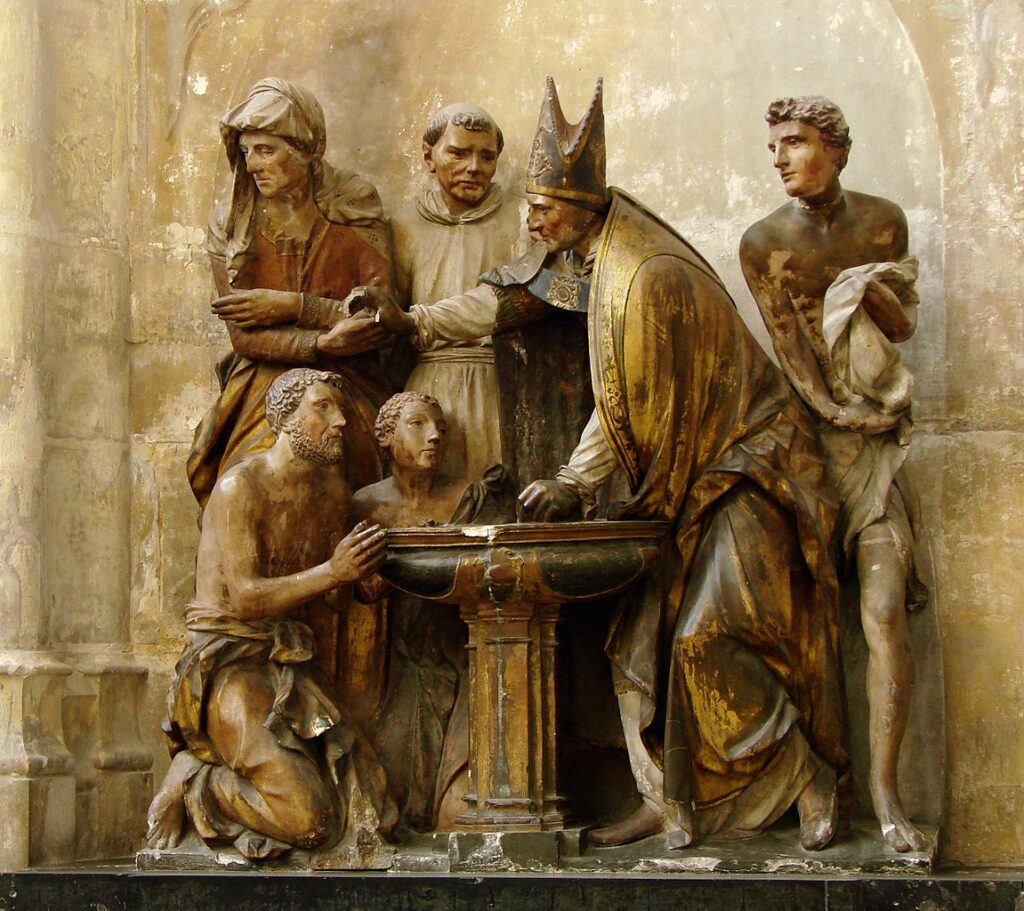
Archetypes in Catholic Thought: Patterns of Divine Truth
Christ as the Ultimate Hero
Across world religions and mythologies, we find the archetypal hero who descends into darkness to achieve victory. In Catholic teaching, Christ uniquely fulfills this archetype—He really does it, conquering death on the Cross and rising to new life.
- The Passion as the Heroic Journey: Christ’s descent into suffering and His Resurrection form the climax of salvation history.
- Medieval Imagery: Christ was depicted as a knight on the Cross, championing righteousness, or the Bridegroom rescuing humanity from sin. These images illustrate that Catholicism has always recognized Christ’s mission in mythic, heroic terms.
Mary as the New Eve and Queen Mother
Mary’s role in Catholic theology stands as a quintessential mythic reversal of the Fall.
- Eve’s Downfall vs. Mary’s Fiat: Where Eve’s disobedience inaugurated sin, Mary’s “yes” opens the floodgates of grace. This dynamic sets the mythic “reversal” motif seen throughout Scripture.
- Ark of the New Covenant: Catholic tradition sees Mary as the one who bore the Word made flesh—like the ancient Ark held the tablets of God’s law.
- Continuing Apparitions: Whether at Lourdes or Fatima, Marian apparitions renew her archetypal role as Mother calling humanity back to Christ, testifying to the Church’s ongoing mythic dimension.
The Church as the Bride of Christ and New Jerusalem
The Church embodies mystical unity with Jesus.
- Not Just an Institution: Catholicism believes the Church is a living sacramental organism—Christ’s Body—rather than a mere bureaucracy.
- New Jerusalem Imagery: In the Book of Revelation, the New Jerusalem descends from heaven, signifying the Church’s eschatological destiny. Catholics partake of this mystery even now through the liturgy.
- Heavenly Wedding Feast: When we worship, we join the marriage supper of the Lamb (Revelation 19:9), anticipating the unbreakable union of Christ and His faithful.
Mythic Consciousness and Catholic Devotion
The Role of Sacred Time and Space
Catholicism reshapes ordinary time into a sacred cycle, commemorating the mysteries of Christ’s life annually.
- Liturgical Year: Advent, Christmas, Lent, Easter, and beyond form a spiritual calendar that immerses the faithful in Christ’s story—turning every season into a renewed encounter with redemption.
- Holy Places: Shrines, cathedrals, and relics become portals where the veil between heaven and earth grows thin, reminding Catholics that God is intimately present in physical reality.
- Pilgrimages: From the Holy Land to Santiago de Compostela, pilgrimages reenact biblical and medieval journeys—reconnecting believers with the historical and transcendent dimensions of the Faith.
The Power of Sacred Art, Music, and Architecture
Catholic tradition employs beauty to illuminate truth.
- Gothic Cathedrals as Stone Theology: Arches, stained glass, and soaring spires express divine order, inviting the worshiper to gaze heavenward.
- Gregorian Chant: Simple yet transcendent melodies mirror the harmony of celestial worship. They serve as an auditory icon, drawing hearts toward contemplative union with God.
- Iconography and Stained Glass: By visually narrating salvation history—from the Nativity to the Resurrection—sacred art amplifies the faithful’s connection with the mythic drama of the Gospel.
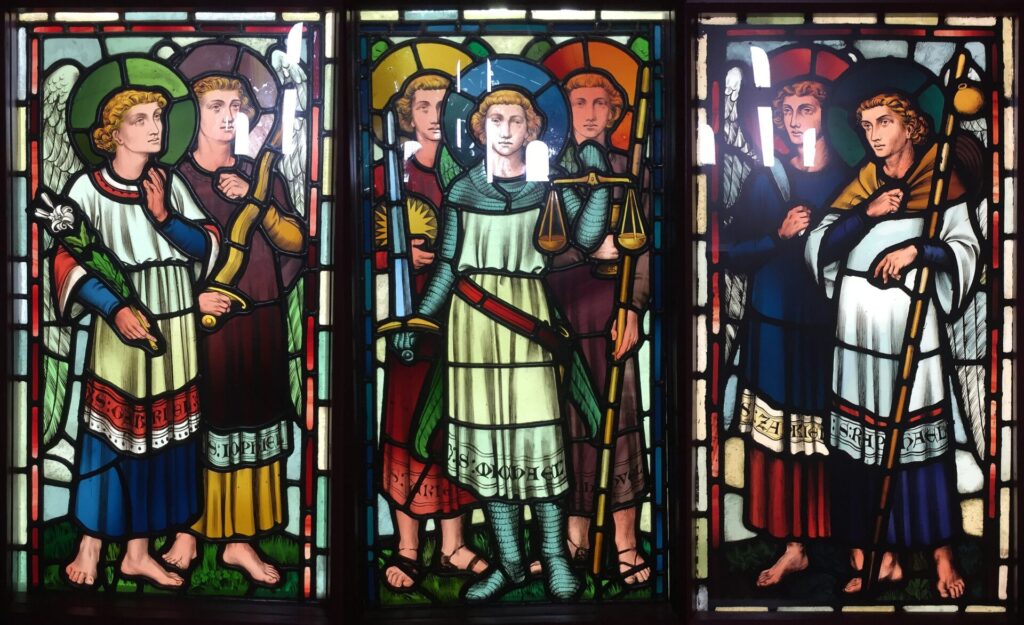
How Myth Strengthens Spiritual Identity
Recognizing the Church’s mythic structure fosters a deeper belonging and spiritual resilience.
- Devotions like the Rosary and Stations of the Cross: These place believers directly into the events of Christ’s life, shaping virtues and reinforcing the reality of the Incarnation.
- A Sacramental Vision: In a world often disenchanted by materialism, the Church’s mythic consciousness declares that the visible is charged with invisible grace.
- Renewing Catholic Culture: When Catholics reclaim this mythic perspective, they enliven parish life, deepen personal piety, and strengthen the Church’s witness to the broader world.
Conclusion: Reclaiming the Mythic Vision of the Church
Catholicism stands as an enacted mystery—a living institution where the eternal truths of salvation take concrete form in worship, sacraments, and devotions. These are not empty symbols but divine realities we enter through prayer, liturgy, and grace.
To see the Church through a mythic lens is to discover that she is far more than just an organization or set of doctrines. She is the Bride of Christ, the New Jerusalem in formation, and the arena where cosmic battles of good and evil unfold. By embracing this mythic awareness, Catholics immerse themselves in the same drama that began in Genesis and will culminate in the final vision of Revelation.
Ultimately, the Church does not simply speak truth—she incarnates it, reflecting Christ, who both fulfilled and transcended every heroic archetype. Living within this sacred story is not about believing a fiction; it is about stepping into God’s eternal reality, where heaven and earth converge in a timeless union.

